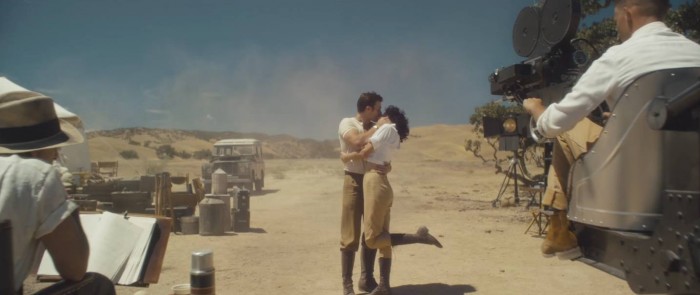Following the release of Taylor Swift’s new music video for “Wildest Dreams”—the 5th single from her 2014 album, 1989—the singer and the video’s director, Joseph Kahn, came under fire for accusations of racism and glorifying colonialism. It is very easy to call out something as being racist or culturally appropriative—especially given how inherently politicized and polarized the discourse on racism is—but these claims often fall into the trap of confusing appropriation and inspiration.
Racism and appropriation have been ongoing issues within the music industry—moreover, the entirety of pop culture—for years. Hollywood has a historical tendency to substitute ethnic characters in its movies for whiter, more Western and better-known actors; Jake Gyllenhaal playing the lead in the 2010 film, Prince of Persia, is a case in point.
There have been numerous cases in recent years that have been singled out by the media and critics as racist or culturally appropriative. The recent accusations towards Swift’s video revolved around the fact that the video, “Packages [the] continent as the backdrop for her romantic song, devoid of any African person or storyline.” There are a number of underlying issues with such critiques—chiefly that the majority of said criticisms blur the line between inspiration and appropriation.
The music video for “Wildest Dreams,” which was shot primarily in Tanzania, focuses on an unrequited romance between two Hollywood stars while in the Golden Age of Hollywood. The video is objectively stunning in terms of its cinematography and art direction, but this glamour has resulted in critics hounding it for glorifying the era that the film depicts. It is important to differentiate between the fact that although the music video does portray an extremely white washed image of Africa, its director clarified that it only sought to draw inspiration from old Hollywood movies, and is ultimately, “an attempt to recreate a very specific era and aesthetic.”
“Wildest Dreams” looks to old Hollywood films such as Out of Africa (1985), evoking the grandeur and lavishness of its production, including stunningly cinematic shots of landscapes—filmed on location—as well as the melodramatic and tumultuous relationship between the film’s two main characters. Dramatic scenes, such as where Swift and Eastwood fly a propellered plane, feature sweeping frames of the Tanzanian landscape. Both films instill an admiration at the breathtaking imagery and striking landscape in which they are respectively set.
The criticism that Swift and Kahn have received for the video can be compared to Katy Perry’s appearance at the 2014 American Music Awards, in which she dressed up head-to-toe in a Geisha costume on a stage that boasted a brutal mix of Japanese and Chinese-inspired props. For the performance, Perry’s face was painted alabaster white and her hair fashioned in the shape of a fan. She carelessly combined Japanese and Chinese cultures into one cringe-worthy—albeit visually stunning—performance. Perry was neither paying tribute to nor celebrating the cultures that she literally stepped into the shoes of in order to put on a striking and conversation-inciting performance.
[URIS id=36294]
Swift was celebrating the romance and glamour of Old Hollywood, as well as its artistry and cinematic value. Perry’s performance, on the other hand, saw her appropriating two other cultures for no reason whatsoever other than to create a visually arresting sight.
Both examples highlight the importance of respecting a culture other than one’s own when it’s being depicted for artistic value. While it’s important to acknowledge the differences in criticism—Swift’s on the grounds of glorifying colonialism, and Perry’s for its blatant cultural appropriation—these two performances tread a dangerous line between confusing appropriation and inspiration. Whatever Swift’s intentions with the music video, we can appreciate it for the piece of art that it is. As Kahn stated, “There is no political agenda to the video. Our only goal was to tell a tragic love story in classic Hollywood iconography,” and ultimately, that is exactly what was achieved.
The music video sticks to its representation of a 1950s Hollywood film set superbly, capturing the glitz and glamour of the old-world movies it strives to evoke. And like the old-world films it is so clearly inspired by, whilst there remains freedom to debate whether or not it is in fact racist or culturally appropriative, it can still be fully appreciated for its artistry, its cinematic value, and artistic elements.









